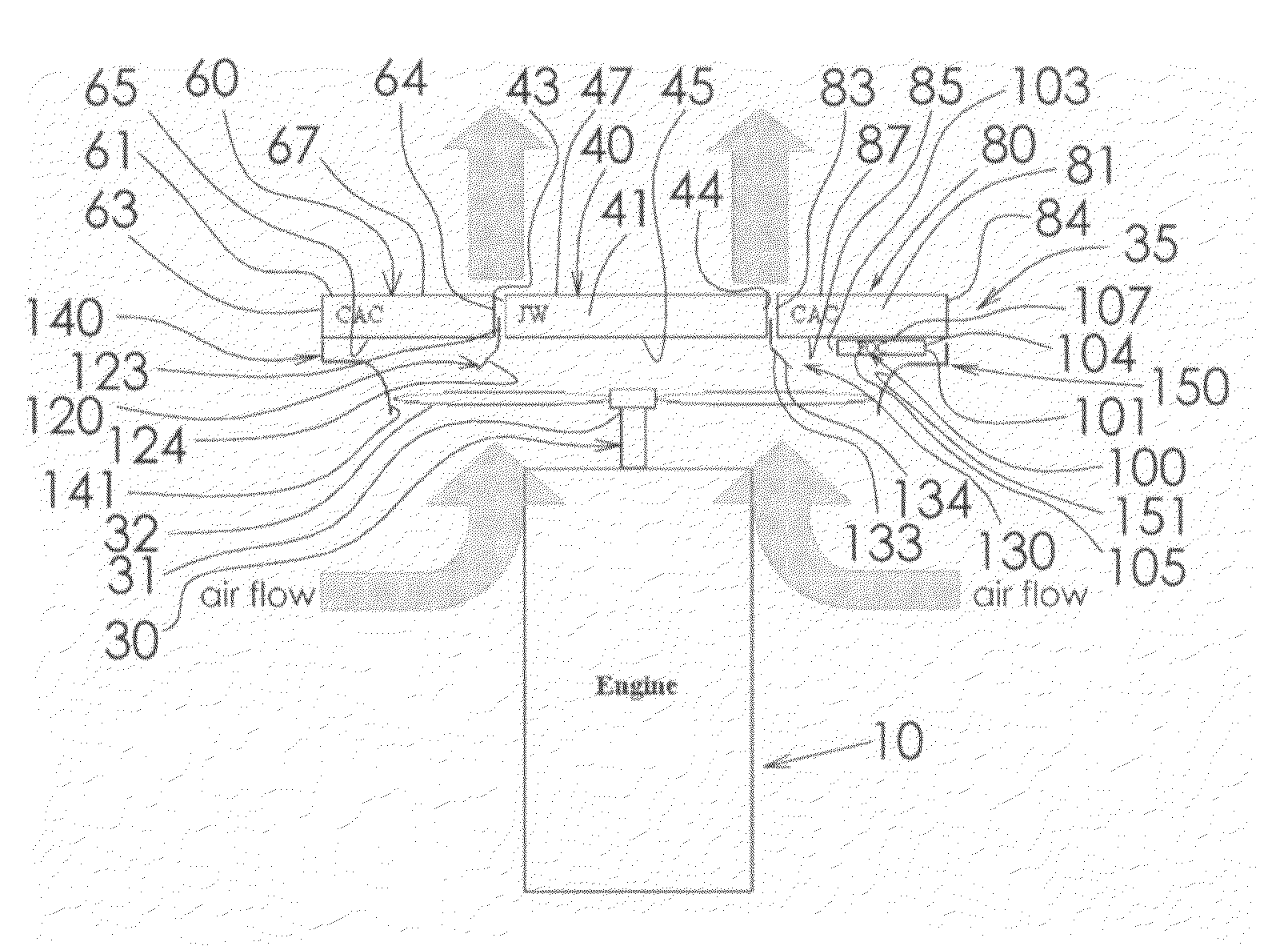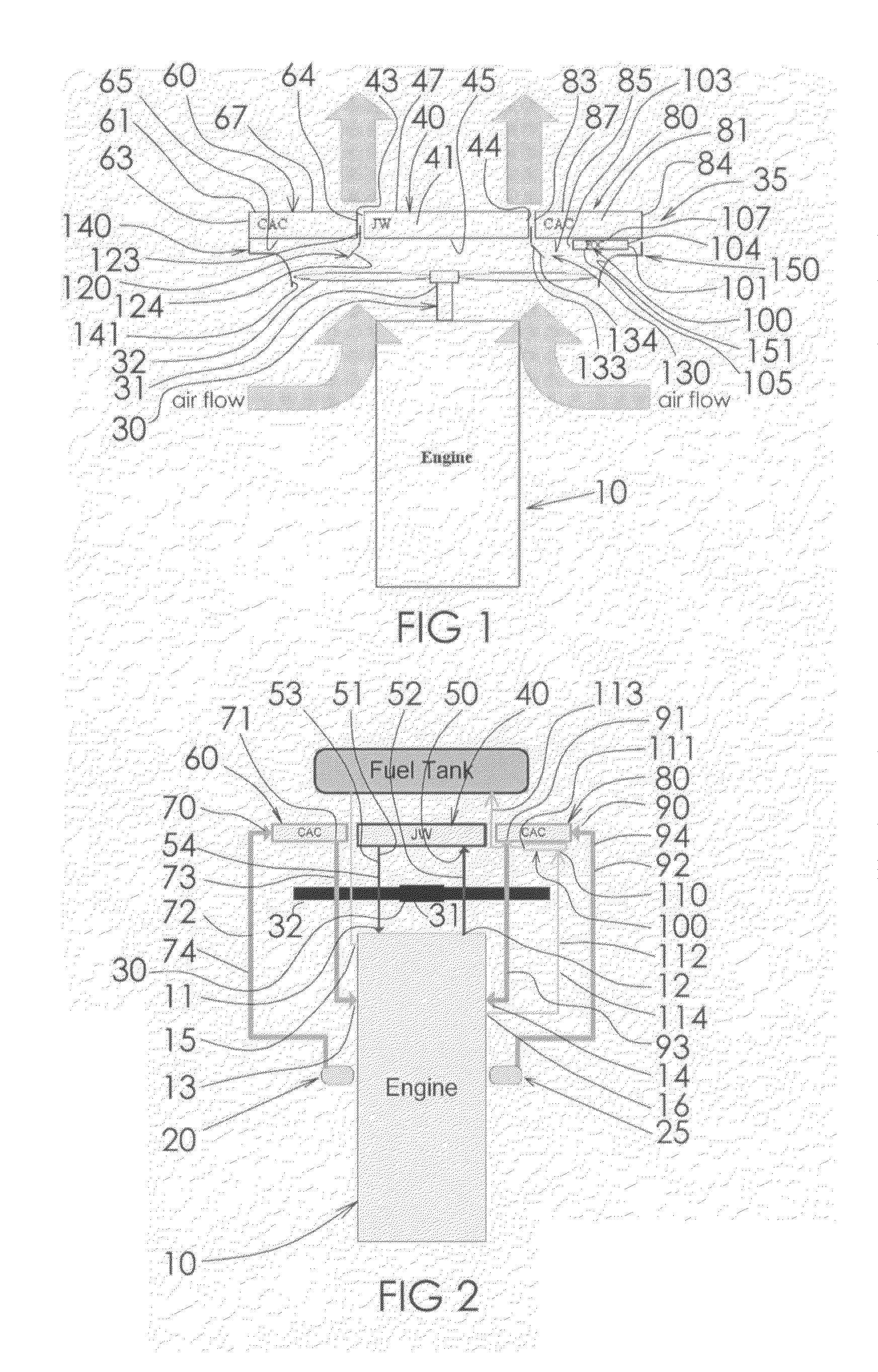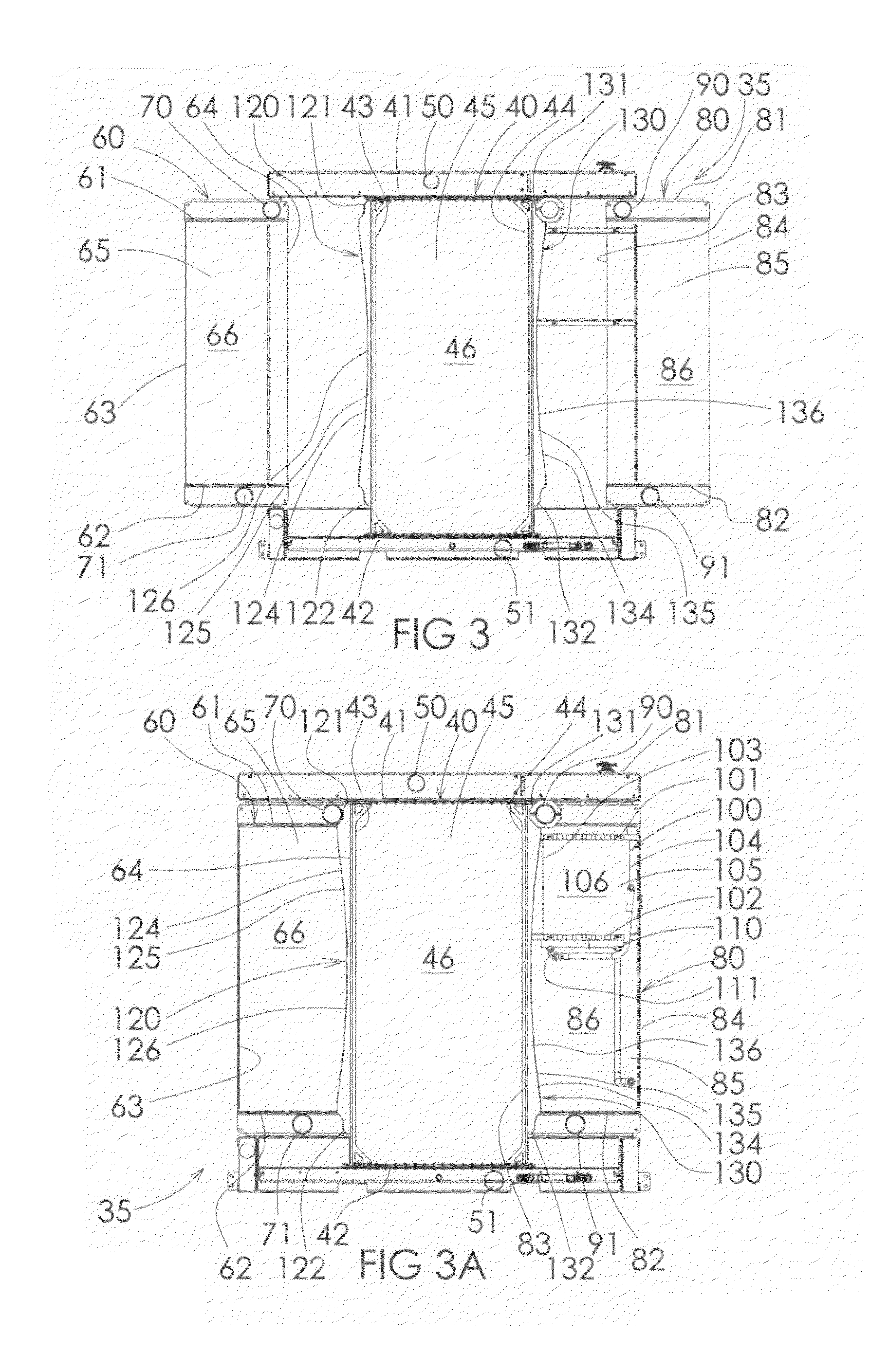Split radiator maximizing entering temperature differential
a radiator and temperature differential technology, applied in the field of radiators, can solve the problems of long time to recapture the cost of efficiency savings through efficiency savings, increase the cost of tooling, and the inability to achieve the effect of increasing the coefficient of heat transfer
- Summary
- Abstract
- Description
- Claims
- Application Information
AI Technical Summary
Benefits of technology
Problems solved by technology
Method used
Image
Examples
Embodiment Construction
[0029]While the invention will be described in connection with several preferred embodiments, it will be understood that it is not intended to limit the invention to those embodiments. On the contrary, it is intended to cover all alternatives, modifications and equivalents as may be included within the spirit and scope of the invention as defined by the appended claims.
[0030]The present invention is intended for use with an engine 10 designed for use with two turbochargers 20 and 25, respectively. Preferably, the engine 10 is a stationary engine. Yet, it is understood that the principals of the present invention could be applied to mobile engines. It is further understood that in a forced convection application, the mechanical air mover or fan may be unnecessary. The engine 10 has a coolant inlet 11 and a coolant outlet 12. The engine 10 further has a first charge air inlet 13 and a second charge air inlet 14. The charge air inlets 13 and 14 are preferably on opposed sides of the en...
PUM
 Login to View More
Login to View More Abstract
Description
Claims
Application Information
 Login to View More
Login to View More - R&D
- Intellectual Property
- Life Sciences
- Materials
- Tech Scout
- Unparalleled Data Quality
- Higher Quality Content
- 60% Fewer Hallucinations
Browse by: Latest US Patents, China's latest patents, Technical Efficacy Thesaurus, Application Domain, Technology Topic, Popular Technical Reports.
© 2025 PatSnap. All rights reserved.Legal|Privacy policy|Modern Slavery Act Transparency Statement|Sitemap|About US| Contact US: help@patsnap.com



